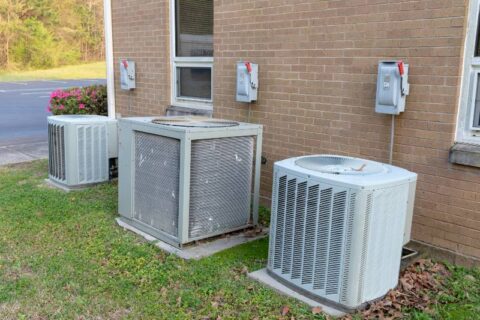Pros & Cons of Radiant Floor Heating
Radiant floor heating uses electrical cables or hot water-filled pipes to heat your home from the ground up. This luxury home heating option can be installed throughout the entire house or in individual rooms, such as the bathroom, kitchen, garage, or basement. Weigh the pros and cons of radiant heat to help you decide if it’s right for your Utah home.
Benefits of Radiant Floor Heating
Here’s why many people consider radiant floor heating superior to other types of heat:
- Silent, invisible operation: Unlike central HVAC units, radiators, mini-splits, and space heaters, all elements of under-floor systems are completely unseen and operate silently.
- Energy-efficient performance: Radiant heating requires less energy to warm up a room than other heating systems. Plus, once hot, the floor continues to radiate heat with no additional energy input. It’s also possible to tie different parts of your home to individual thermostats, creating a zoned system that saves you even more.
- Consistent heating: Forced-air systems circulate heated air through ductwork. This delivers heat to one corner of the room, where it rises to the ceiling, leaving your toes cold. Radiant heating warms the space from the ground up, heating objects in the room and raising the temperature more thoroughly and consistently.
- Improved air quality: Another problem with forced-air heating is that it aggravates allergy and asthma symptoms. Radiant heating does away with dirty ductwork, a huge benefit for anyone wanting cleaner indoor air.
- Low maintenance: With no moving parts to wear out or air filters to change, radiant floor heating systems don’t need annual maintenance the way furnaces, heat pumps, and boilers do. This allows for worry-free heating all winter long.
- Compatibility with most floor types: Whether you have ceramic or stone tiles, vinyl planks, wall-to-wall carpet, hardwood, laminate, or other flooring types, rest assured that radiant heating will work.
Disadvantages of Under-Floor Heating
To help you make an informed decision, consider the downsides of radiant heating:
- Higher upfront cost: Under-floor systems cost more to purchase, design, and install than traditional central heating.
- More involved installation: You have to remove and replace your existing floors to install radiant heating underneath. To avoid unnecessary costs, consider upgrading during a home renovation.
- Longer heat-up time: Radiant heating takes longer than forced-air systems to heat a cold room. To overcome this drawback, simply adjust your expectations (and the thermostat) to match.
Although installing radiant heat is more expensive and involved than traditional furnaces and boilers, the comfort and efficiency benefits could be worth the investment. If you still have questions about radiant floor heating, turn to Parley’s PPM Plumbing, Heating & Cooling for answers. Our HVAC specialists have over 40 years of experience improving home comfort and efficiency for homeowners in Orem, Draper, Sandy, and the surrounding areas.
Ready to learn more? Utah County residents can reach us at 801-226-3033, while Salt Lake County residents should call 801-229-2665. You can also contact us online with any questions you have.


